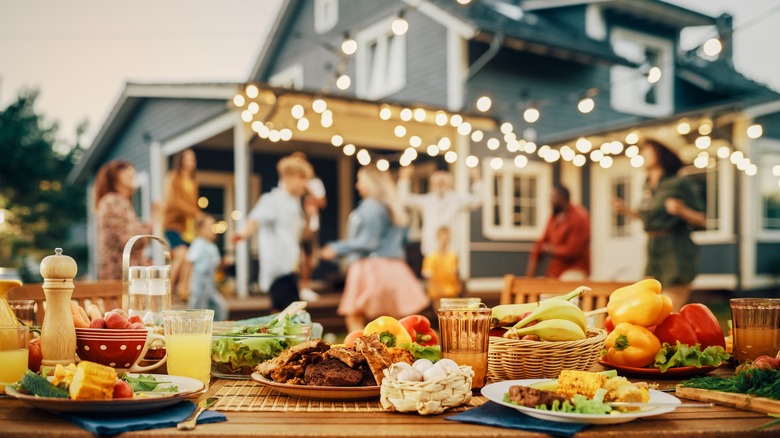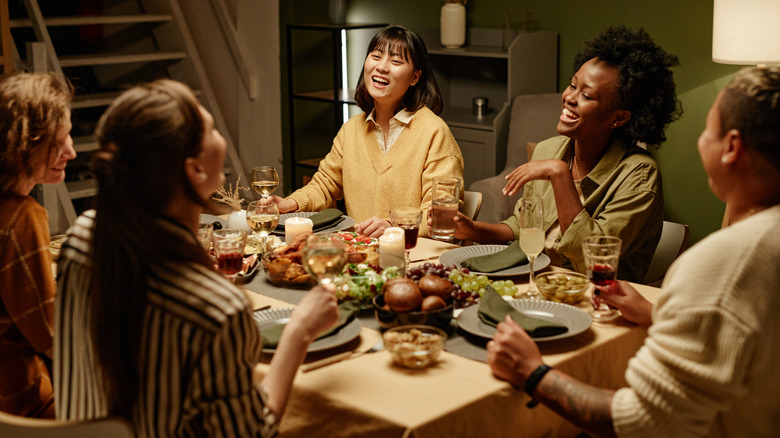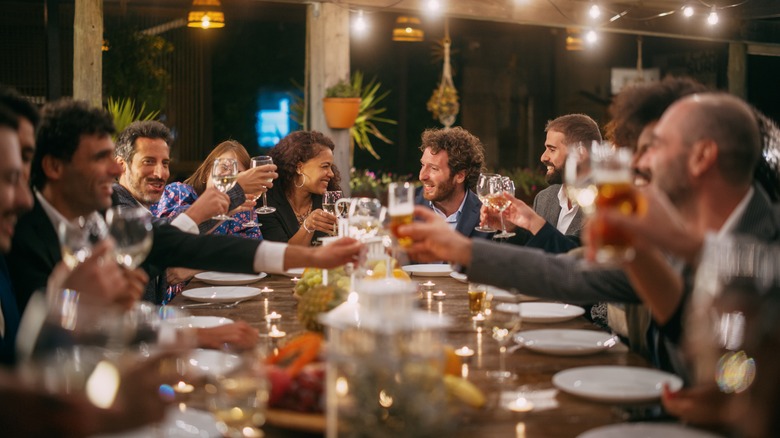Large Vs Small Parties: When's The Best Time To Start Eating Dinner?
Guests at large gatherings tend to behave differently than they would at more intimate events. After all, all eyes are on you at a dinner party with less than 10 people, whereas a function with upwards of 50 usually calls for slightly less formal energy. Regardless of how many people are at a function, you can still strive to be an exceptional party guest to secure an invite to the next one. To be the best party guest you possibly can, there are rules of party etiquette to remember.
For example, if you arrive at a function completely famished, you might not notice that you have started digging into your plate of food before anyone else. To save you from the awkwardness of putting your fork down mid-bite when you finally realize, note the number of guests before eating. A smaller event will require slightly different meal etiquette than a larger party. At traditionally smaller, more intimate dinner parties, it is polite to wait until every member of the party has gotten their food before you take a bite. Party guests in larger groups can usually eat after their meal has arrived but should still pay attention to the host's behavior and expectations around the dinner table. When in doubt, look to the host for your cue to begin eating.
The right moment to dig in depends on the guest count
One of the worst etiquette mistakes you can make is ignoring the host's wishes at a party. No matter how hungry you are, chowing down before you get the go-ahead is a faux pas, especially if the host has prepared the food themselves. Etiquette coach Kristi Spencer told The Kitchn, "When you are in someone's home, you should wait for the host to take their first bite before you take yours." If you are the host, determine when you feel it is appropriate for guests to begin eating based on guest count, and then set the group's expectations. If you don't mind that your group of five begin eating before you do, let them know. Alternatively, tell your party of 30 beforehand that you'd like them to wait until everyone has their plates full before eating.
The right time to eat also depends on the style of meal you are enjoying. Plated meals have a more formal feeling, and guests should pay close attention to when the host gives the green light to dig in. As for much larger group functions where meals are served buffet style, you're likely free to eat without judgment as soon as you reach the end of the buffet line. If you still want to practice polite etiquette in a less formal setting, you can always wait until a few of your friends have arrived at your table before you eat.
These etiquette rules should be followed no matter how many people are attending
While formal gatherings with dozens of utensils at each place setting are fewer and further between nowadays, there are still a few party rules that should always be followed, even at the most modern get-togethers. Some etiquette rules may be a bit old, but they are still followed for a good reason: To show your host gratitude, respect, and excitement for their event. According to etiquette blogger Emily Post, one of the most basic rules of being a good party guest includes not overindulging in the food your host offers. Once you get that green light to enjoy your food, try not to go back for seconds and thirds until you are sure everyone has gotten at least one plate full — this also goes for drinks.
Another good etiquette rule is to ask your host if you can contribute to the party spread in any way, whether it's something to drink or a nice appetizer, before the day of the event. Even if they say no, bringing the host a bottle of wine or a small, edible thank-you gift for them to enjoy later will never be frowned upon. After everyone has enjoyed their meal (at the appropriate time, of course), offering to assist with the clean up or taking some food home so the host isn't saddled with a month's worth of catering is another great way to be an expert party guest.


